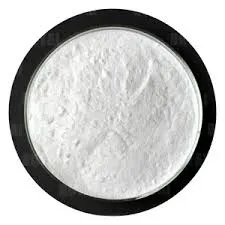
नोभ . 21, 2024 17:44 Back to list
hpmc viscosity grades
Understanding HPMC Viscosity Grades
Hydroxypropyl Methylcellulose (HPMC) is a widely used polymer in various industries due to its versatile viscosity properties. HPMC is a non-ionic, water-soluble cellulose ether that is derived from natural cellulose through a series of chemical modifications. One of the critical aspects when working with HPMC in formulations is understanding its viscosity grades, which influence the performance of products in applications ranging from construction to pharmaceuticals.
Understanding HPMC Viscosity Grades
HPMC grades are generally categorized based on their viscosity when dissolved in water. Lower viscosity grades, such as HPMC 10000, are suitable for applications requiring quick dispersion and lower thickness. These grades are commonly used in products like adhesives, paints, and coatings, where a fluid consistency is desired. Conversely, higher viscosity grades, like HPMC 200000, are essential in offering more significant thickening and gelling properties. These grades are often employed in applications such as food production, pharmaceuticals, and personal care products, where higher viscosity can enhance texture and delivery.
hpmc viscosity grades

It is crucial to choose the correct viscosity grade for a particular application. For example, in the pharmaceutical industry, the viscosity of HPMC can affect drug release rates and bioavailability. High-viscosity HPMC can form gels that slow down the dissolution of active ingredients, while lower viscosity variants may lead to faster release rates.
Apart from viscosity, several other factors such as molecular weight, substitution level, and the presence of additives can impact the performance of HPMC. The varying degrees of substitution—the ratio of hydroxypropyl and methoxy groups to the cellulose backbone—further refine its characteristics, allowing for tailored performance.
In summary, understanding HPMC viscosity grades is essential for optimizing formulations across various industries. By selecting the appropriate grade, formulators can achieve the desired properties for their products, improving efficacy and performance. Whether in construction, food, or pharmaceuticals, HPMC remains a vital ingredient, and its viscosity characteristics play a central role in the functionality of the end product.
-
Versatile Hpmc Uses in Different Industries
NewsJun.19,2025
-
Redispersible Powder's Role in Enhancing Durability of Construction Products
NewsJun.19,2025
-
Hydroxyethyl Cellulose Applications Driving Green Industrial Processes
NewsJun.19,2025
-
Exploring Different Redispersible Polymer Powder
NewsJun.19,2025
-
Choosing the Right Mortar Bonding Agent
NewsJun.19,2025
-
Applications and Significance of China Hpmc in Modern Industries
NewsJun.19,2025







